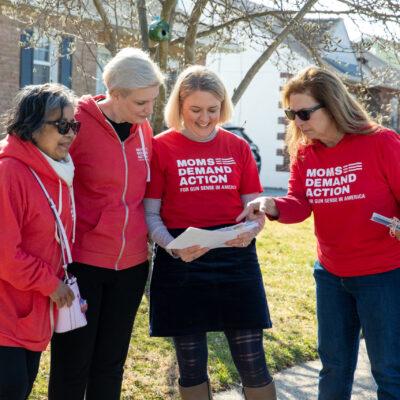As Law Enforcement Confirm Ghost Gun Used in UnitedHealthcare CEO Assassination, Here’s What You Need to Know About the Weapon of Choice for Criminals
12.9.2024
NEW YORK – NYPD Chief of Detectives Joseph Kenny today confirmed the weapon used to assassinate UnitedHealthcare CEO Brian Thompson was a ghost gun capable of firing 9mm rounds that may have included 3D-printed parts. Ghost guns are unserialized, untraceable firearms that can be easily put together in minutes from parts acquired without a background check, or created with a 3D printer.
The Biden-Harris Administration took effective steps to prevent the proliferation of ghost guns made with parts. The 2022 Bureau of Alcohol, Tobacco, Firearms and Explosives (ATF) rule clarifying that ghost guns must be serialized and sold with accompanying background checks is currently under Supreme Court review in Garland v. VanDerStok. Members of law enforcement, two dozen Attorneys General, and national security experts have all urged the Supreme Court to uphold the federal rule regulating ghost guns. Fifteen states and the District of Columbia have enacted laws to address ghost guns, including some states that prohibit the creation or possession of unserialized 3D-printed guns.
“This news is yet another reminder that ghost guns are a dream come true for criminals who want to avoid detection, and a nightmare for anyone tasked with stopping them,” said John Feinblatt, president of Everytown for Gun Safety. “Ghost guns look like a regular gun, shoot like a regular gun, and kill like a regular gun — so our lawmakers must ensure they continue to be regulated like regular guns.”
“Ghost guns have exacerbated our nation’s gun violence epidemic, and while early data indicates a drop in ghost gun recoveries at crime scenes since the ATF’s rule went into effect, the senseless killing of Brian Thompson indicates we still have a long way to go,” said Eric Tirschwell, executive director of Everytown Law. “Ghost guns undermine all of our gun safety laws, pose unique risks to public safety, and have become the weapon of choice for criminals nationwide.”
On October 8, 2024, the United States Supreme Court heard oral arguments in Garland v. VanDerStok, a critical case taking up a reckless decision from the Fifth Circuit Court of Appeals that would strike down portions of the Biden-Harris Administration’s 2022 lifesaving ghost gun rule if the Supreme Court affirms. How the Supreme Court decides this case will determine whether kits for assembling ghost guns will be regulated like the deadly firearms they are—by requiring serialization of major components and background checks on purchasers. Here’s what you need to know:
- For years, public safety advocates, gun violence survivors, top legal experts, law enforcement, elected officials, and more fought to regulate ghost guns for what they are — deadly firearms.
- The ATF’s resulting rule, which was finalized in April 2022 and took effect in August 2022 under the Biden-Harris administration, updated and clarified key definitions – including “firearm,” “frame,” and “receiver” – to ensure that kits and components that are easily assembled into untraceable ghost guns are subject to the same regulations as firearms.
- The Fifth Circuit invalidated the ATF rule on November 9, 2023. Two prior challenges that would have struck down or undermined the ghost gun rule were largely unsuccessful.
- Allowing the unregulated sale of ghost gun kits and components to resume would re-open a gaping hole in our already fragile system of gun safety, allowing everyone from individuals convicted of felony offenses to underage minors to easily obtain and assemble untraceable guns.
- Law enforcement, several Attorneys General and national security experts have expressed support for the ATF regulation. Several leading Mayors have also joined the fight to hold this industry accountable in the courts, including in Syracuse, San Jose, Chicago, and Columbia, South Carolina. The cities of Baltimore and Philadelphia also brought cases forward.
- The ATF estimates that between 2016 and 2022, law enforcement personnel recovered approximately 71,024 unserialized crime guns. Examples of ghost gun shootings from across the country since 2013 are available here.
- While this legal challenge is playing out in the courts, the rule remains in place.Early data indicates a drop in ghost gun recoveries at crime scenes since the ATF’s rule went into effect, further proving that a Supreme Court ruling affirming the rule in VanDerStok is absolutely essential to public safety. New York City, Baltimore, Boston, Los Angeles, San Francisco, Philadelphia, Oakland, and other cities reported declines in ghost gun recoveries in 2023.
Everytown’s report on ghost guns, featuring testimonials from law enforcement officers, can be found here. For interviews or to learn more, please don’t hesitate to reach out to [email protected].




